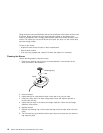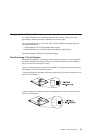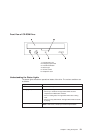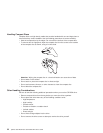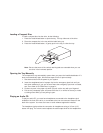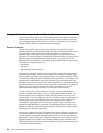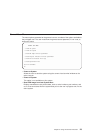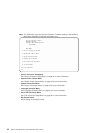Unlike the service director, the service processor cannot be configured in a client/server
environment where one system can be used to manage all dial-out functionally for a set
of systems.
Prior to installing the service director feature, ensure that you have the latest levels of
service processor microcode and system firmware. You also need a properly configured
modem. For more information on configuring a modem, see “Call-In/Call-Out Setup
Menu” on page 52.
Service Director
The Service Director is a software extension to the AIX operating system that monitors
the system while the AIX operating system is running. The Service Director monitors
and analyzes all recoverable system failures, and, if needed, can automatically place a
service call to a service center (without user intervention).
The service center receives the machine type/serial number, host name, SRN, and a
problem description. The service center analyzes the problem report and, if warranted,
dispatches a service person to the customer site. The service center also determines if
any hardware components need to be ordered prior to the service person’s arrival.
The Service Director code also gives the user the option to establish a single system as
the problem reporting server. A single system, accessible over the user network, can be
used as the central server for all the other systems on the local area network (LAN) that
are running the Service Director application. If the Service Director application on a
remote client decides a service request needs to be placed, the client forwards the
information to the Service Director server, which dials the service center telephone
number from its locally attached modem. In this scenario, the user only needs to
maintain a single analog line for providing call-out capabilities for a large set of servers.
When used in a scalable parallel (SP) environment, a client/server type implementation
is configured. The Service Director client code runs on each of the SP nodes. The
server component runs on the control workstation. In the event of any system failures,
the relevant information is transmitted to the control workstation through the integrated
Ethernet. After it has been alerted to the system failure, the control workstation initiates
actions to prepare and send the service request.
A modem is required for enabling automated problem reporting to the service center.
Configuration files for several types of modems are included as part of the Service
Director package. Refer to “Call-In/Call-Out Setup Menu” on page 52 for more
information on configuring your modem.
Chapter 2. Using the System 25




